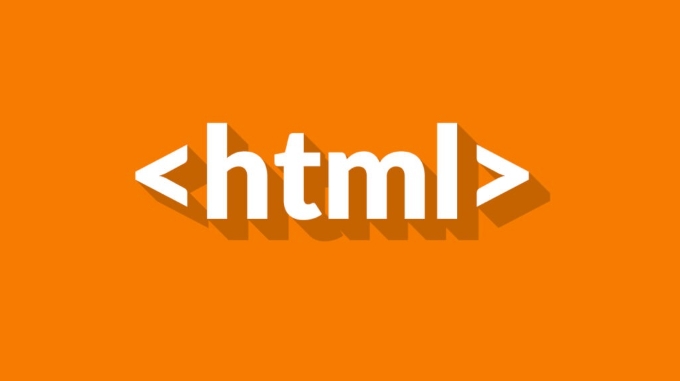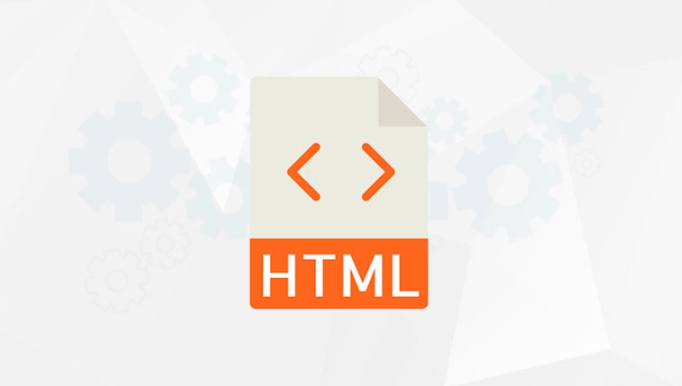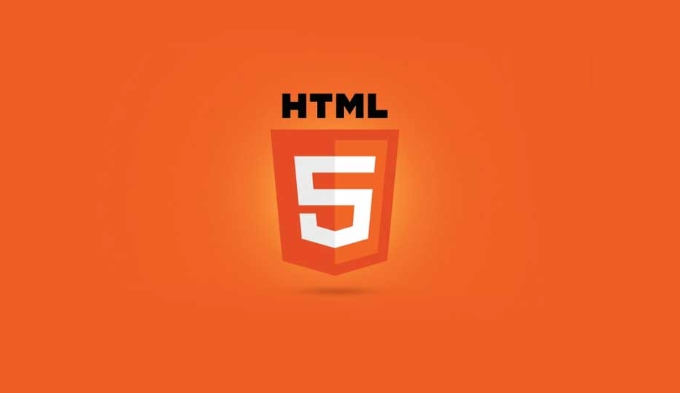What is the purpose of using data-* attributes on HTML tags?
Jun 28, 2025 am 01:07 AMCustom data attributes like data-role="button" are used to store extra information in HTML elements for easier access via JavaScript. They allow developers to attach small bits of related data directly to elements, such as item IDs (data-id), temporary state (data-state="active"), or configuration settings (data-options). These attributes help avoid maintaining separate JavaScript data structures and are especially useful in dynamic UIs. 1. They simplify element selection using CSS selectors like document.querySelectorAll('[data-role="tab"]'). 2. The dataset property provides a standardized way to access values in JavaScript, converting data-user-id to element.dataset.userId. 3. While not suited for large-scale or sensitive data storage, they offer a safe, standards-compliant method to connect HTML and JavaScript seamlessly for lightweight needs.

When you see HTML tags with attributes like data-role="button" or data-user-id="123", it's not just random code — there’s a clear purpose behind it. These are called custom data attributes, and they're used to store extra information right inside your HTML elements in a way that’s both valid and easy to access from JavaScript.

Keeping Data Tied to Elements
One of the main reasons to use data-* attributes is to attach small bits of related data directly to an element. For example, if you have a list of user cards on a page, you might store each user’s ID in a data-user-id attribute. That way, when someone clicks a card, your JavaScript can quickly grab that ID without needing to look it up somewhere else.

This helps avoid situations where you’d otherwise need to maintain separate data structures in JavaScript just to keep track of which element corresponds to which data. It’s especially useful in dynamic UIs where elements are added or removed frequently.
Some common uses:

- Storing item IDs (
data-id) - Holding temporary state (
data-state="active") - Attaching configuration settings (
data-options='{ "speed": "fast" }')
Making JavaScript Selection Easier
Another big benefit is how cleanly they work with CSS selectors and JavaScript. Since they follow a standard format, you can select elements based on their data values using querySelectorAll. For instance:
document.querySelectorAll('[data-role="tab"]')This makes it simple to target only the elements you care about without relying on class names or other attributes that might change for styling reasons.
Also, because the naming starts with data-, you don’t have to worry about conflicting with existing or future HTML attributes. It’s a safe, standardized way to add your own metadata.
Accessing Data in a Standard Way
HTML5 introduced a neat shortcut for accessing these values via JavaScript: the dataset property. If you have an element with data-user-id="789", you can read it like this:
element.dataset.userId // returns "789"
Notice that the attribute name is camelCase after data-, so data-user-id becomes userId. This built-in method makes working with custom data attributes clean and consistent across modern browsers.
You’ll often see this used in frameworks or libraries to pass initial configuration or metadata into components without requiring extra AJAX calls or global variables.
Using data-* attributes isn't always the best solution for large-scale data storage or complex application state — that’s what JavaScript objects and state management tools are for. But for lightweight, element-specific data needs, they’re a solid, standards-compliant choice. Just keep in mind that anything stored in data-* is public and visible in the source, so it shouldn’t contain sensitive info.
That’s basically it. Not magic, just a practical tool for connecting HTML and JavaScript more smoothly.
The above is the detailed content of What is the purpose of using data-* attributes on HTML tags?. For more information, please follow other related articles on the PHP Chinese website!

Hot AI Tools

Undress AI Tool
Undress images for free

Undresser.AI Undress
AI-powered app for creating realistic nude photos

AI Clothes Remover
Online AI tool for removing clothes from photos.

Clothoff.io
AI clothes remover

Video Face Swap
Swap faces in any video effortlessly with our completely free AI face swap tool!

Hot Article

Hot Tools

Notepad++7.3.1
Easy-to-use and free code editor

SublimeText3 Chinese version
Chinese version, very easy to use

Zend Studio 13.0.1
Powerful PHP integrated development environment

Dreamweaver CS6
Visual web development tools

SublimeText3 Mac version
God-level code editing software (SublimeText3)

Hot Topics
 How do I minimize the size of HTML files?
Jun 24, 2025 am 12:53 AM
How do I minimize the size of HTML files?
Jun 24, 2025 am 12:53 AM
To reduce the size of HTML files, you need to clean up redundant code, compress content, and optimize structure. 1. Delete unused tags, comments and extra blanks to reduce volume; 2. Move inline CSS and JavaScript to external files and merge multiple scripts or style blocks; 3. Simplify label syntax without affecting parsing, such as omitting optional closed tags or using short attributes; 4. After cleaning, enable server-side compression technologies such as Gzip or Brotli to further reduce the transmission volume. These steps can significantly improve page loading performance without sacrificing functionality.
 How has HTML evolved over time, and what are the key milestones in its history?
Jun 24, 2025 am 12:54 AM
How has HTML evolved over time, and what are the key milestones in its history?
Jun 24, 2025 am 12:54 AM
HTMLhasevolvedsignificantlysinceitscreationtomeetthegrowingdemandsofwebdevelopersandusers.Initiallyasimplemarkuplanguageforsharingdocuments,ithasundergonemajorupdates,includingHTML2.0,whichintroducedforms;HTML3.x,whichaddedvisualenhancementsandlayout
 How do I use the element to represent the footer of a document or section?
Jun 25, 2025 am 12:57 AM
How do I use the element to represent the footer of a document or section?
Jun 25, 2025 am 12:57 AM
It is a semantic tag used in HTML5 to define the bottom of the page or content block, usually including copyright information, contact information or navigation links; it can be placed at the bottom of the page or nested in, etc. tags as the end of the block; when using it, you should pay attention to avoid repeated abuse and irrelevant content.
 How do I use the tabindex attribute to control the tab order of elements?
Jun 24, 2025 am 12:56 AM
How do I use the tabindex attribute to control the tab order of elements?
Jun 24, 2025 am 12:56 AM
ThetabindexattributecontrolshowelementsreceivefocusviatheTabkey,withthreemainvalues:tabindex="0"addsanelementtothenaturaltaborder,tabindex="-1"allowsprogrammaticfocusonly,andtabindex="n"(positivenumber)setsacustomtabbing
 What is the declaration, and what does it do?
Jun 24, 2025 am 12:57 AM
What is the declaration, and what does it do?
Jun 24, 2025 am 12:57 AM
Adeclarationisaformalstatementthatsomethingistrue,official,orrequired,usedtoclearlydefineorannounceanintent,fact,orrule.Itplaysakeyroleinprogrammingbydefiningvariablesandfunctions,inlegalcontextsbyreportingfactsunderoath,andindailylifebymakingintenti
 How do I use the and elements to provide a caption for an image?
Jun 24, 2025 am 12:45 AM
How do I use the and elements to provide a caption for an image?
Jun 24, 2025 am 12:45 AM
The standard way to add titles to images in HTML is to use and elements. 1. The basic usage is to wrap the image in the tag and add a title inside it, for example: this is the title of the image; 2. The reasons for using these two tags include clear semantics, convenient style control, and strong accessibility, which helps the browser, crawler and screen readers to understand the content structure; 3. Notes include that it can be placed up and down but needs to maintain logical order, cannot replace the alt attribute, and can contain multiple media elements to form a whole unit.
 What is the loading='lazy' one of the html attributes and how does it improve page performance?
Jul 01, 2025 am 01:33 AM
What is the loading='lazy' one of the html attributes and how does it improve page performance?
Jul 01, 2025 am 01:33 AM
loading="lazy" is an HTML attribute for and which enables the browser's native lazy loading function to improve page performance. 1. It delays loading non-first-screen resources, reduces initial loading time, saves bandwidth and server requests; 2. It is suitable for large amounts of pictures or embedded content in long pages; 3. It is not suitable for first-screen images, small icons, or lazy loading using JavaScript; 4. It is necessary to cooperate with optimization measures such as setting sizes and compressing files to avoid layout offsets and ensure compatibility. When using it, you should test the scrolling experience and weigh the user experience.
 How do I use the element to represent a section of navigation links?
Jun 24, 2025 am 12:55 AM
How do I use the element to represent a section of navigation links?
Jun 24, 2025 am 12:55 AM
The key to using elements to represent navigation link areas is semantics and clear structure, usually in conjunction with organizational links. 1. The basic structure is to put the parallel links in and wrap them inside, which is friendly to auxiliary tools and is conducive to style control and SEO; 2. Commonly used in or, for placing main navigation or footer link collections; 3. A page can contain multiple areas, such as main menu, sidebar or footer independent navigation.






